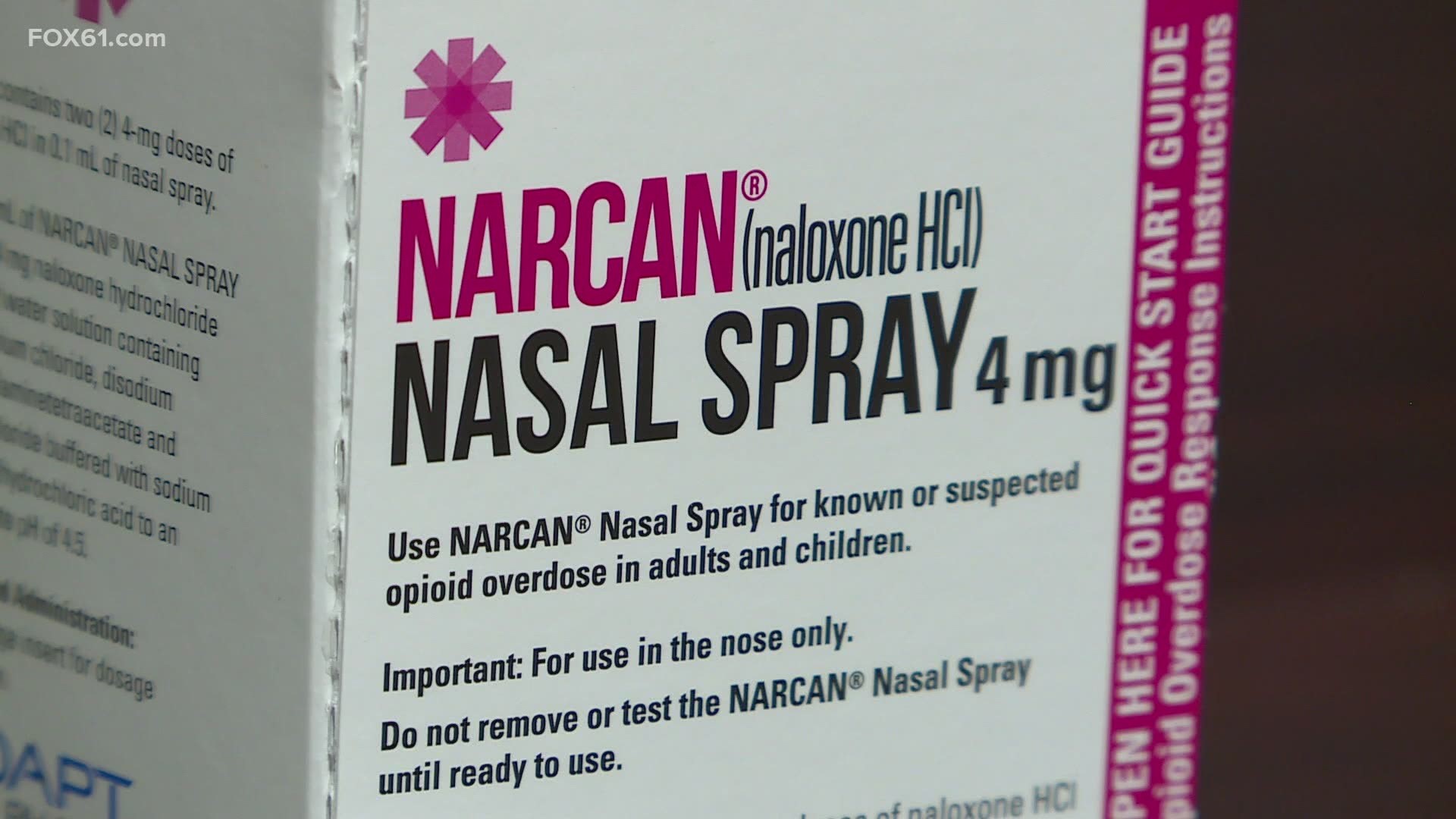Addiction, it's an epidemic on top of the pandemic that we are already fighting, and thanks to the Community Renewal Team in Hartford, one man is still alive today, after overdosing in the CRT lobby last week.
It was a normal afternoon when a 56 year old man walked through the Community Renewal Team's office in Hartford on Tuesday, December 8th.
That man was coming for a case management appointment, but ended up overdosing within a matter of minutes.
"I came to the front, I saw that he was kind of stuck in place overdosing," said Keila Sanchez, who was the first to arrive to help.
Sanchez was just one of the many people who worked quicklyu to save this man's life. Alongside her was Ra'Shawn Warmington, another CRT employee who was able to catch the man as he fell to the ground.
The team then quickly made the decision to administer narcan, a drug that reverses the effects of opiods.
However, CRT's medical director says you must recognize the signs of an overdose to be able to act swiftly.
"Typically, somebody who has taken too much of an opioid, heroin, morphine, fentanyl, will have pinpoint pupils, their pupils will be constricted, they may have cold clammy skin, their muscles will be weak, they will seem to nod off and then wake off, nod off and wake up," said Hasbani. "If there is a lot of an opioid on board, the opioid will decrease the breathing, and they will eventually stop breathing, they will then pass out, and they will fall to the ground, their lips may turn blue, fingernails may turn blue, or in darker skin individuals they will turn more ashen gray, and if there is some breathing, it may sound like breathing or gasps."
The man ended up receiving six shots of Narcan, which Dr. Hasbani says is a very large dose.
Meanwhile, Casie DeRosier, who deals with clients in CRT's Medication Assisted Treatment Program says, when it comes to overdoses, you only get so many chances.
"The more overdoses that an individual has, the greater the chance that their body cannot recover from it," said DeRosier.
DeRosier was later able to track down the man, get consent to talk with him, and get him started on Suboxone, a drug that helps addicts hopefully beat the disease.
"Suboxone has a blocker in the medication to where if you did relapse when you went home, you have a greater potential of not overdosing and dying," said DeRosier. "That is a great safety measure until you get to an outside provider, and begin your outside treatment."
And that medicine is accessible.
"Doctors, physicians, APRNs, they are eligible or have been eligible, and passed the waiver to be able to prescribe Suboxone in emergency rooms to help an individual begin their recovery right there in the emergency room, and not have to wait to get an appointment for an outside provider, or in-patient setting," said DeRosier.
Unfortunately, the man did not show up for his appointment with CRT the next day, but DeRosier says, this story does not end here.
"We do not give up," said DeRosier. "Especially with the beast of addiction, we will be planning to try to reengage him in other avenues."
"It takes a team," said Sanchez. "Everybody performed well, and everyone moved quickly, and it was an experience."
If you'd like to find out how to get Narcan, know that it is available.
"This is an epidemic, and Narcan saves lives, and it did that day in our clinic," said Hasbani.
CRT says you are able to obtain Narcan with a prescription from your doctor, or you can also stop by their office, and they will be happy to provide you with some.
"Always go based off of your gut instinct," said DeRosier. "Err on the side of caution."

